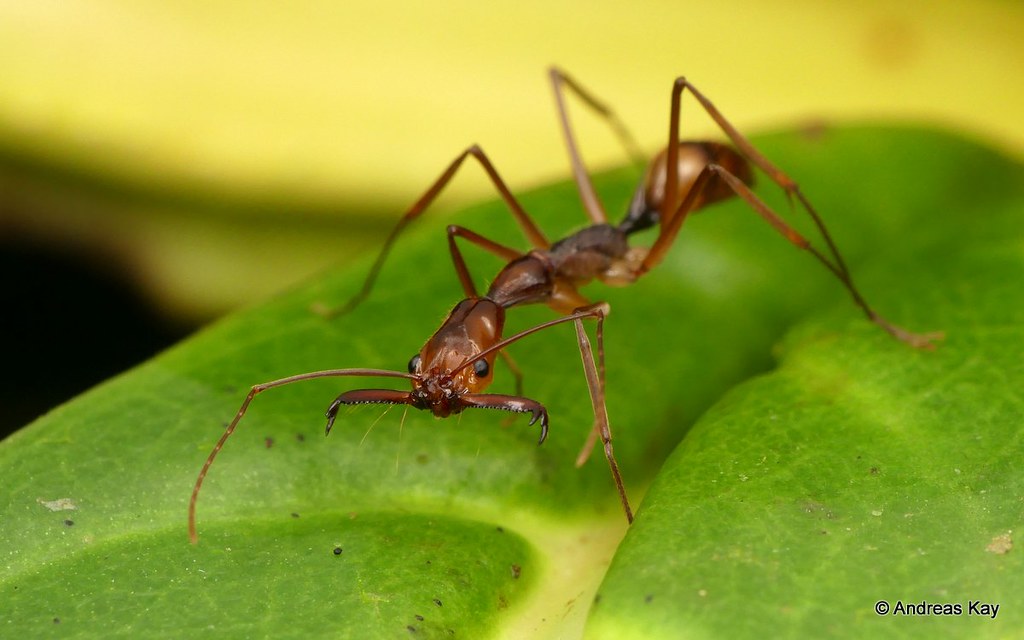In the humid depths of tropical rainforests, where evolution runs wild and competition drives impossible adaptations, ants have developed some of the most extraordinary body designs on Earth. These tiny architects of the insect world have transformed their anatomy into living weapons, shields, and tools that would make science fiction writers jealous. From massive heads that serve as living doorways to bodies that explode on command, tropical ants have pushed the boundaries of biological engineering to extremes that challenge our understanding of what’s possible in nature.
The Doorhead Ant – Nature’s Living Security System
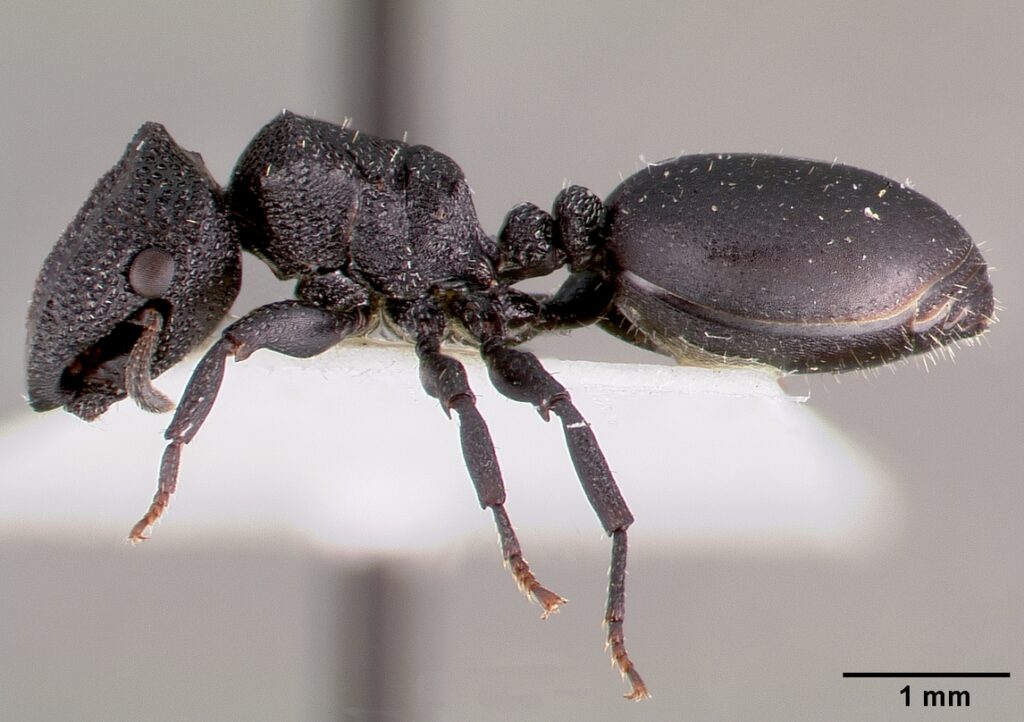
Meet Cephalotes atratus, the doorhead ant whose soldiers have evolved heads so perfectly flat and oversized they function as living doors for their colonies. These remarkable insects, found throughout Central and South America, possess craniums that can completely seal the entrance holes of their tree-dwelling nests. The soldier’s head fits so precisely into the nest opening that it becomes virtually impossible for intruders to force their way inside.
When a worker ant approaches the nest, it performs a specific tapping sequence on the soldier’s head, much like a secret knock. The soldier recognizes the pattern and steps aside, allowing the worker to enter. This incredible adaptation has made doorhead ants nearly impervious to raids from other ant species and parasites.
The evolutionary pressure that created this bizarre design stems from the harsh reality of tropical competition. In environments where every tree cavity is precious real estate, having an impenetrable fortress can mean the difference between survival and extinction.
The Exploding Ant – Ultimate Sacrifice for the Colony
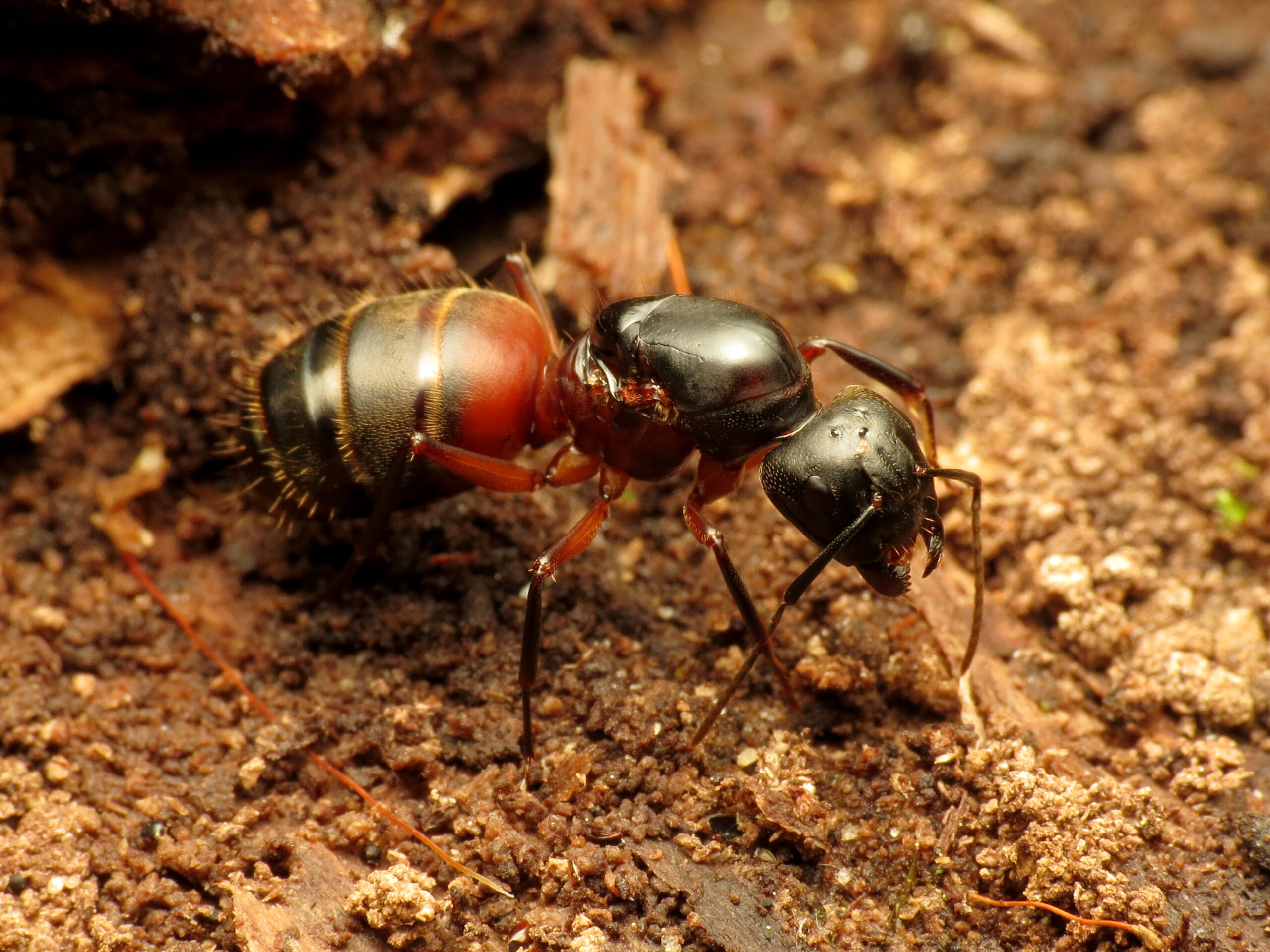
Colobopsis explodens, discovered in the rainforests of Southeast Asia, has earned its dramatic name through one of nature’s most extreme defensive strategies. When threatened, minor workers of this species literally explode their own bodies, rupturing specialized glands that spray toxic yellow fluid over attackers. This ultimate sacrifice protects the colony from invasive species and predators.
The explosive mechanism involves powerful muscle contractions that cause the ant’s gaster to burst open, releasing a cocktail of chemicals that can immobilize enemies. These kamikaze ants have evolved internal structures specifically designed to maximize the effectiveness of their self-destructive defense. The toxic secretion is so potent that it can kill smaller insects on contact and deter much larger predators.
What makes this adaptation even more remarkable is the social coordination involved. The exploding workers seem to recognize when their sacrifice will be most beneficial to the colony, often positioning themselves strategically before detonating. This behavior represents one of the most extreme examples of altruism in the animal kingdom.
The Turtle Ant – Armored Fortress on Six Legs
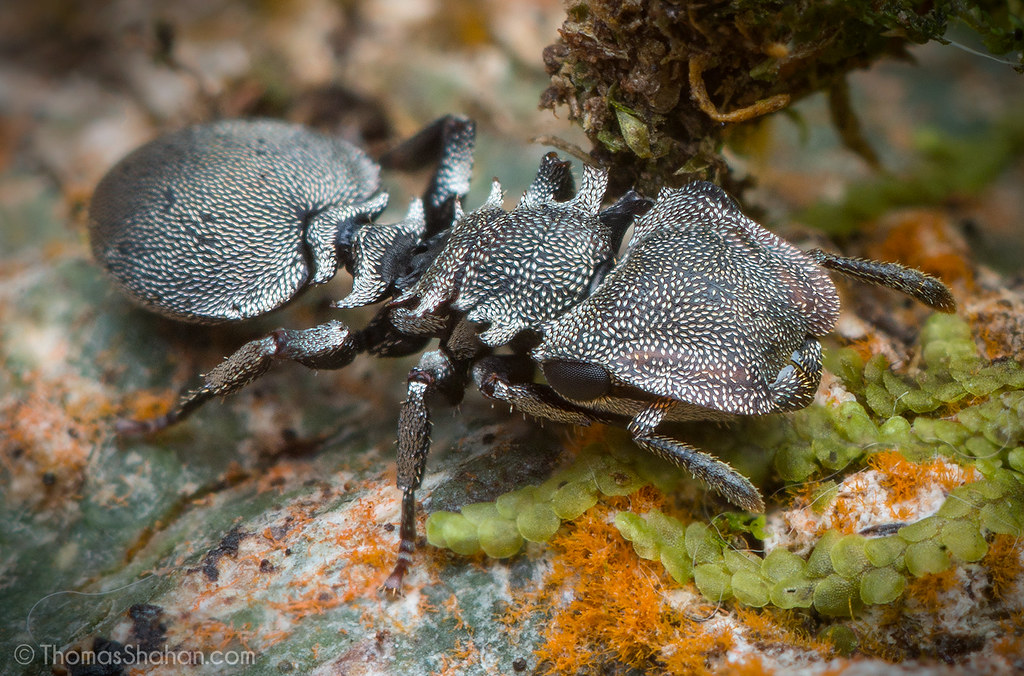
Cephalotes rohweri, commonly known as the turtle ant, has developed one of the most impressive defensive body designs in the insect world. These South American ants have evolved thick, armored exoskeletons that make them nearly invulnerable to the bites and stings of other insects. Their bodies are so heavily fortified that they resemble tiny armored vehicles more than traditional ants.
The turtle ant’s most striking feature is its ability to completely retract its legs and antennae when threatened, creating an impenetrable ball of armor. This defense mechanism is so effective that predators often give up trying to penetrate the ant’s protective shell. The thick exoskeleton is reinforced with calcium carbonate, making it harder than many rocks.
Living in the treetops of tropical rainforests, these ants have adapted to an environment where falling means certain death. Their armored bodies not only protect them from predators but also help them survive accidental falls from great heights. The weight of their armor is offset by their incredible strength, allowing them to carry loads many times their body weight.
The Gliding Ant – Aerial Acrobats of the Rainforest

Cephalotes atratus workers have developed an extraordinary ability that seems to defy the laws of physics for flightless insects. These remarkable ants can glide through the air with precision that would make a skilled pilot envious, using their flattened body segments and specialized leg positions to control their descent. When they fall or jump from the forest canopy, they can glide back to their home tree with remarkable accuracy.
The gliding mechanism involves spreading their legs wide and adjusting their body angle to create lift and control direction. Their flattened head and gaster work together as rudimentary wings, allowing them to cover distances of up to 100 meters in a single glide. This ability is crucial for ants living in the forest canopy, where a missed branch could mean falling to the forest floor and never finding their way back to the colony.
Scientists have discovered that these ants can make mid-air corrections to their flight path, demonstrating a level of aerial control that rivals many flying insects. The evolution of this gliding ability represents a unique solution to the challenges of arboreal life in tropical rainforests.
The Honeypot Ant – Living Storage Tanks
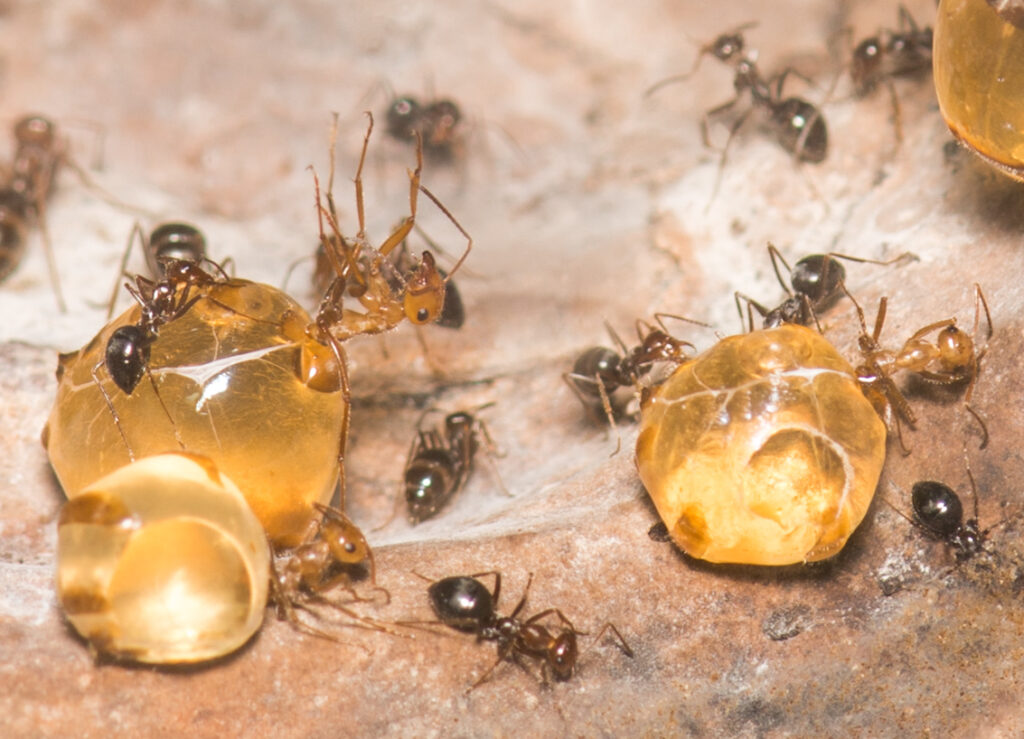
In the arid regions where tropical and desert climates meet, Myrmecocystus species have evolved one of the most bizarre caste systems in the ant world. Certain workers, known as repletes, transform into living storage vessels, hanging from cave ceilings with their abdomens swollen to grape-like proportions. These living honeypots can expand their bodies to store nectar, honeydew, and other liquid nutrients for the colony.
The transformation process is truly remarkable. Young workers destined to become repletes begin feeding continuously until their abdomens stretch to many times their original size. Their exoskeleton becomes translucent, allowing observers to see the golden liquid stored within. Some repletes can store enough food to sustain dozens of colony members during lean periods.
The social structure that supports this system is equally fascinating. Worker ants regularly visit the repletes to deposit or withdraw food, treating them as living pantries. During times of scarcity, other colony members stroke the repletes’ antennae, stimulating them to regurgitate stored food. This adaptation allows honeypot ant colonies to survive in some of the world’s most challenging environments.
The Spine-Covered Defender – Walking Fortresses

Polyrhachis species, found throughout tropical Asia and Australia, have evolved bodies covered in an array of spines, hooks, and projections that make them look like medieval weapons come to life. These elaborate defensive structures serve multiple purposes, from deterring predators to providing anchoring points for nest construction. The spines are arranged in specific patterns that vary between species, creating a natural identification system.
The most impressive feature of these ants is their ability to link together using their spines and hooks, forming living chains that can span gaps or create bridges for other colony members. This cooperative behavior turns their individual defensive features into collective construction tools. When threatened, groups of spiny ants can form impenetrable defensive formations that few predators dare to attack.
The spines also serve as camouflage, helping these ants blend in with the thorny plants and rough bark of their tropical habitats. The evolution of such elaborate defensive structures demonstrates the intense predation pressure that tropical ants face, driving them to develop increasingly sophisticated protection mechanisms.
The Trap-Jaw Ant – Lightning-Fast Predators
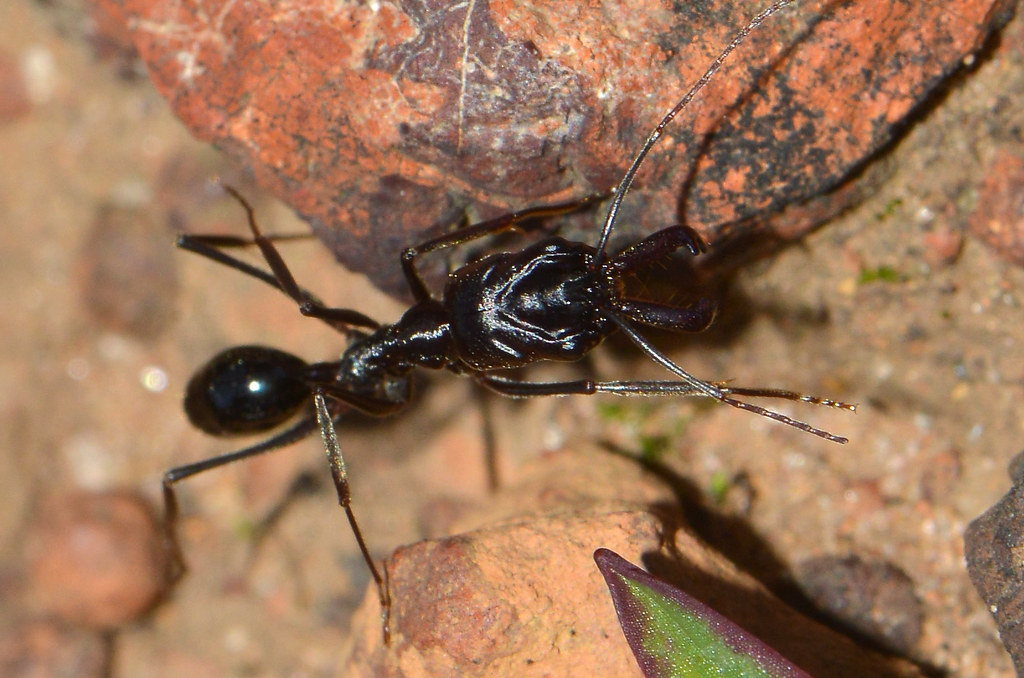
Odontomachus species, commonly known as trap-jaw ants, have evolved mandibles that snap shut with velocities reaching 145 mph, making them among the fastest moving body parts in the animal kingdom. These incredible jaws can generate forces over 300 times the ant’s body weight, powerful enough to launch the ant itself into the air when the jaws strike the ground. The mechanism operates like a spring-loaded trap, with specialized muscles that store energy before releasing it in an explosive burst.
The trap-jaw’s design is a masterpiece of biomechanical engineering. The mandibles lock open at an angle of 180 degrees, creating maximum striking distance. When sensory hairs on the inner surface of the jaws detect contact with prey, the lightning-fast closure occurs in less than 0.5 milliseconds. This speed is so incredible that high-speed cameras are needed to capture the motion.
Beyond hunting, these ants use their powerful jaws for defense and even transportation. When threatened, they can strike the ground with their mandibles to catapult themselves away from danger, a behavior known as “ballistic jaw propulsion.” This adaptation has made trap-jaw ants highly successful predators in tropical ecosystems worldwide.
The Leafcutter’s Specialized Castes – Living Tools
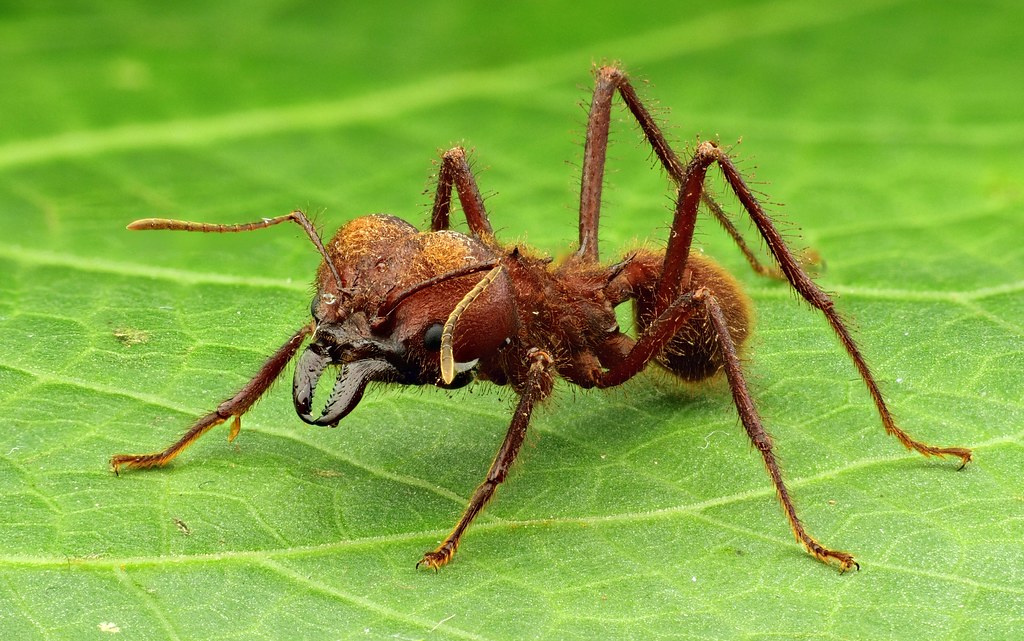
Atta species, the famous leafcutter ants of Central and South America, have evolved one of the most sophisticated caste systems in the insect world, with workers displaying dramatically different body designs optimized for specific tasks. The largest workers, called majors, possess massive heads and powerful mandibles designed for cutting through tough plant material. Their heads can be 200 times larger than those of the smallest workers in the same colony.
The medium-sized workers, known as media, have more balanced proportions that make them efficient at carrying leaf fragments back to the nest. Their bodies are perfectly sized to handle pieces of vegetation that would be too large for smaller workers but too small to justify the energy expense of major workers. The smallest workers, called minims, ride on the leaf fragments being carried by their larger sisters, defending against parasitic flies that attempt to lay eggs on the working ants.
This extreme specialization creates a living assembly line that can process enormous quantities of plant material. The different castes work together so efficiently that leafcutter colonies can strip entire trees of their leaves in a matter of days. The evolution of such specialized body forms demonstrates how social insects can overcome individual limitations through collective adaptation.
The Weaver Ant’s Flexible Architecture – Living Construction Crews
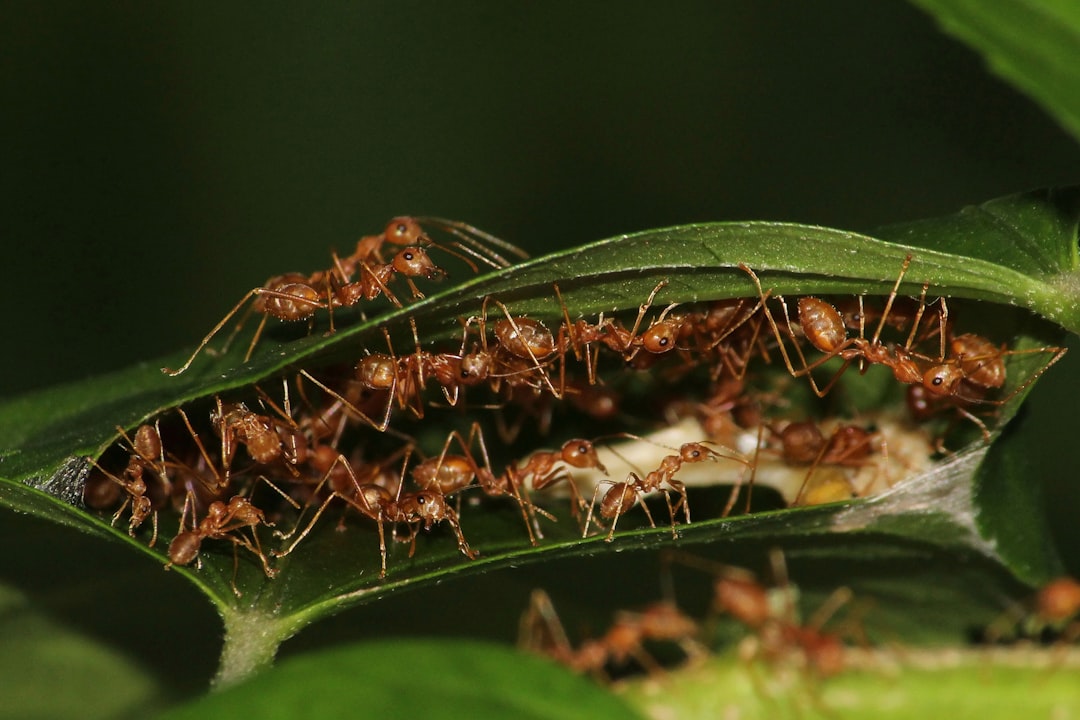
Oecophylla smaragdina, the Asian weaver ant, has evolved elongated bodies and extremely flexible joints that allow them to perform architectural feats that would impress human engineers. These ants can stretch their bodies to incredible lengths, linking together to form living chains that span gaps between leaves. Their flexible thorax and abdomen can bend at angles that would be impossible for most insects, allowing them to navigate complex three-dimensional spaces.
The weaver ant’s construction process is a marvel of biological engineering. Workers form chains by gripping each other’s waists with their mandibles, creating living bridges that can support the weight of multiple ants. Other workers carry larvae to the construction site, using the silk-producing glands of the young ants as living glue guns to bind leaves together. The entire process requires precise coordination and communication between dozens of individuals.
Their elongated bodies also make them formidable predators. Weaver ants can stretch out to grab prey from surprising distances, and their flexible joints allow them to maintain grip on struggling victims while maneuvering in tight spaces. This combination of architectural ability and predatory skill has made weaver ants dominant forces in tropical forest canopies.
The Stilt-Legged Hunter – Elevated Predators
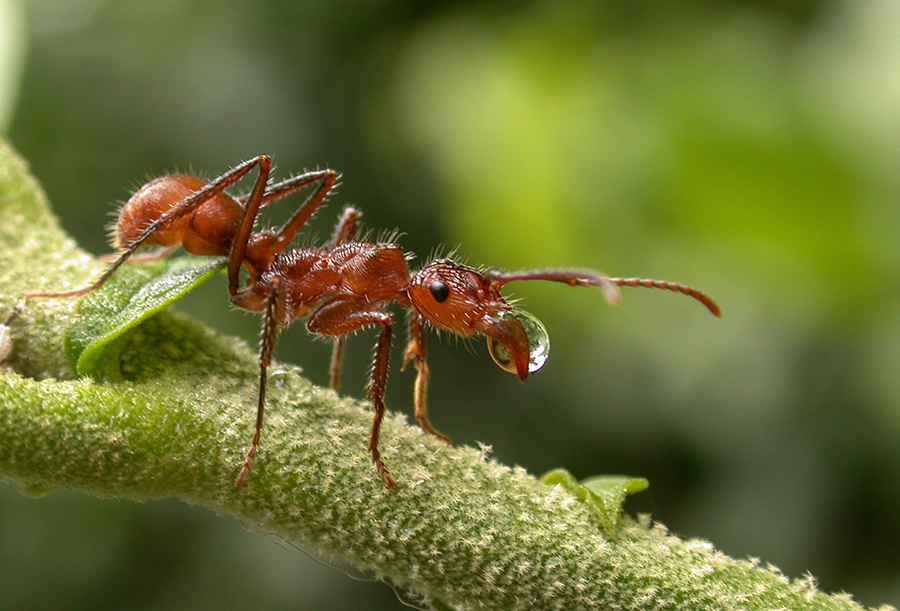
Ectatomma species, found in tropical regions of the Americas, have evolved extraordinarily long legs that elevate them above the forest floor like living stilts. These extended appendages serve multiple purposes, from increasing their visual range to allowing them to navigate through dense vegetation without disturbing leaves that might alert prey. Their elevated position also helps them avoid ground-dwelling predators and competitors.
The stilt-like legs are not just for show – they’re precision instruments for hunting. The extended reach allows these ants to grab prey from positions that would be impossible for shorter-legged species. Their heightened perspective gives them a significant advantage in spotting potential meals and threats in the complex environment of the tropical forest floor.
These ants have also developed specialized behaviors that take advantage of their unique body design. They can step over obstacles that would block other ants, and their long legs allow them to move with a distinctive high-stepping gait that minimizes contact with the ground. This adaptation has proven so successful that several species have evolved similar body plans independently.
The Underground Architects – Specialized Diggers
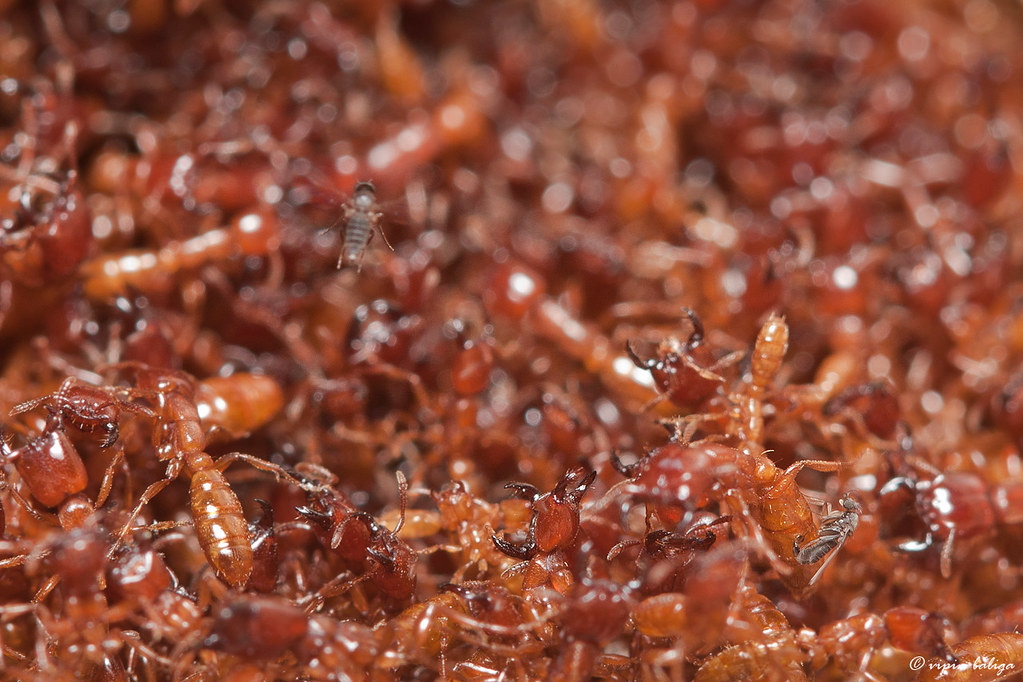
Dorylus species, known as driver ants, have evolved specialized morphologies for their nomadic lifestyle in tropical Africa. The workers display extreme size variation, with the largest soldiers possessing heads that can be 50 times larger than those of the smallest workers. These massive-headed defenders have mandibles so large they cannot feed themselves and must be cared for by smaller workers.
The soldiers’ enormous heads house powerful jaw muscles that can generate incredible bite forces. Their mandibles can slice through tough materials like leather and have been traditionally used by some African cultures as emergency sutures for wounds. The size of their heads is so extreme that it affects their balance, requiring them to use their heads as anchors when climbing.
The smaller workers have evolved streamlined bodies perfect for their role as the colony’s excavation crew. Their compact size allows them to work efficiently in tight underground spaces, while their powerful legs and mandibles make them excellent diggers. The coordination between these different castes creates one of nature’s most efficient excavation systems.
The Metallic Mimic – Shimmering Deception
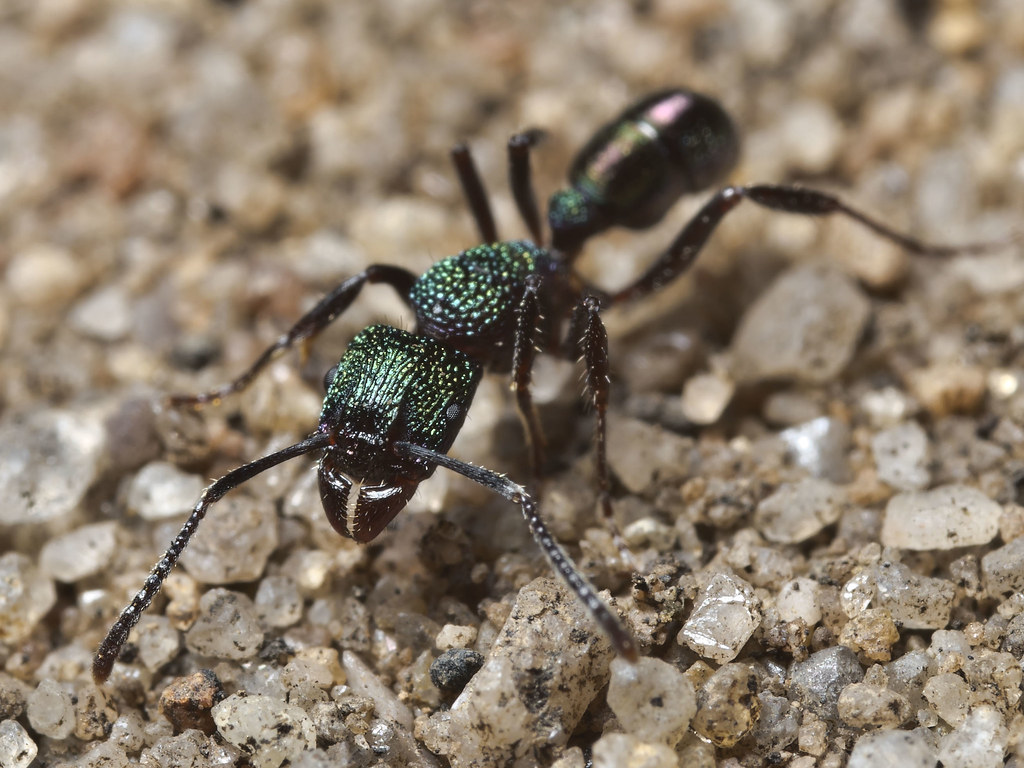
Rhytidoponera metallica, native to Australia’s tropical regions, has evolved a body surface that reflects light like polished metal, creating one of the most visually striking appearances in the ant world. This metallic sheen is produced by microscopic structures in their exoskeleton that reflect light in specific wavelengths, creating an almost supernatural appearance. The effect is so pronounced that these ants can be spotted from considerable distances when sunlight hits their bodies.
The metallic coloration serves multiple purposes beyond mere aesthetics. The reflective surface helps regulate body temperature in the intense tropical heat, preventing overheating during foraging activities. The shimmering effect also creates visual confusion for predators, making it difficult for them to track the ant’s movements accurately.
Recent research has revealed that the metallic appearance may also serve as a form of species recognition, helping these ants identify their own kind in the complex visual environment of the rainforest. The specific wavelengths of light reflected by their bodies create a unique signature that other ants can recognize even at a distance.
Conclusion

The extraordinary body designs of tropical ants represent millions of years of evolutionary innovation, each adaptation telling a story of survival in some of Earth’s most competitive environments. From exploding defenders to gliding acrobats, these remarkable insects have pushed the boundaries of what’s possible in biological engineering. Their bizarre modifications serve as living proof that nature’s creativity knows no bounds when it comes to solving the challenges of survival and reproduction.
These seven species represent just a fraction of the incredible diversity found in tropical ant communities, where every ecological niche has been filled by species with increasingly specialized adaptations. Their success demonstrates that sometimes the most outlandish solutions are the most effective ones. As we continue to explore the world’s tropical regions, who knows what other incredible ant species await discovery, each potentially more bizarre and fascinating than the last?

